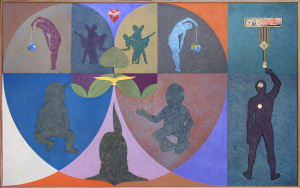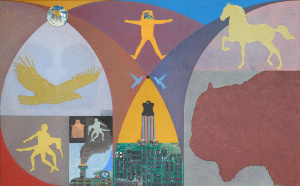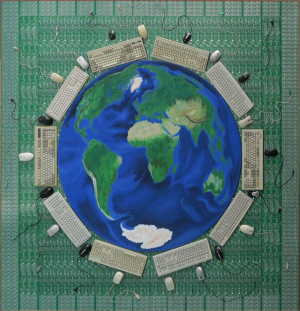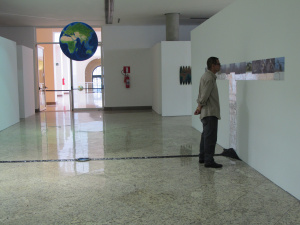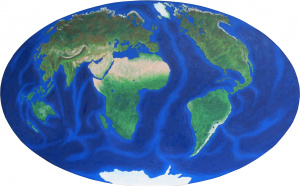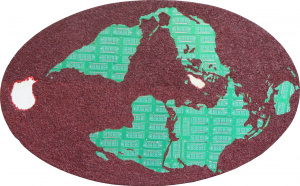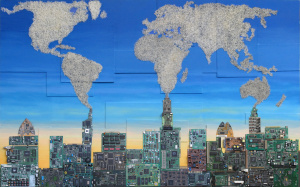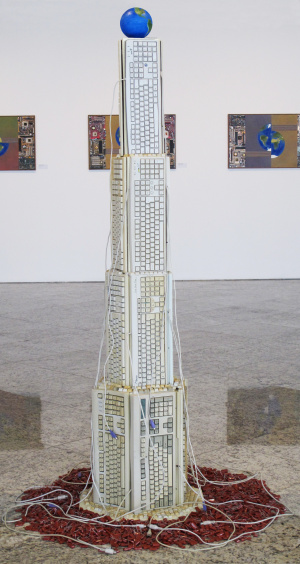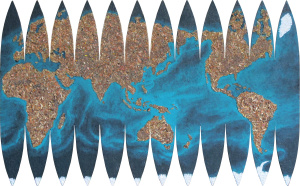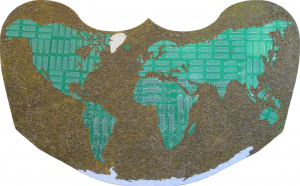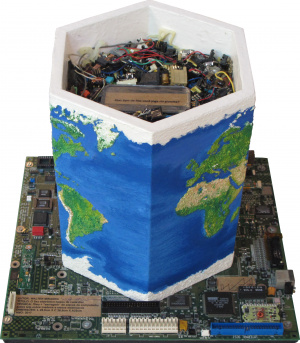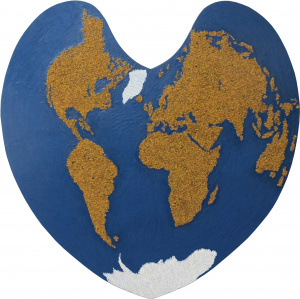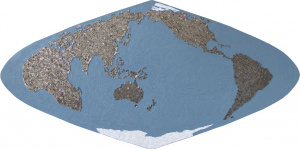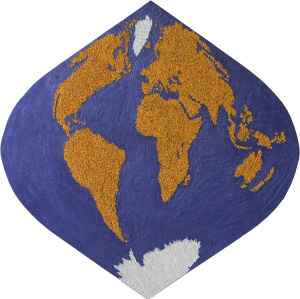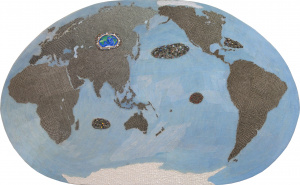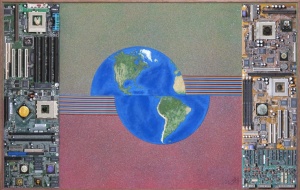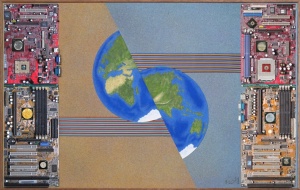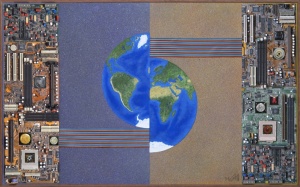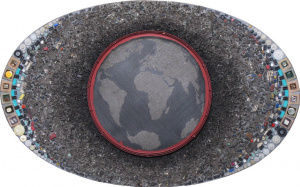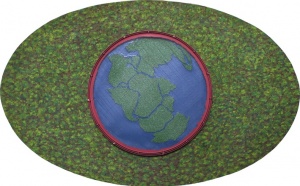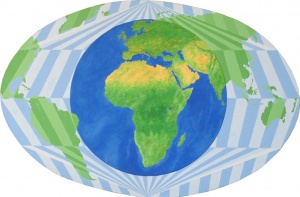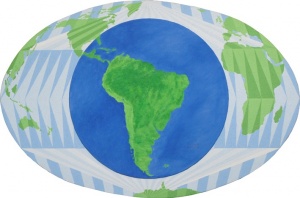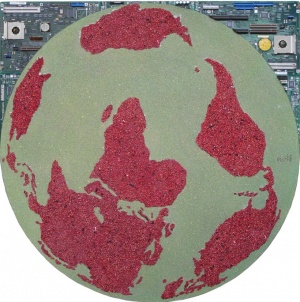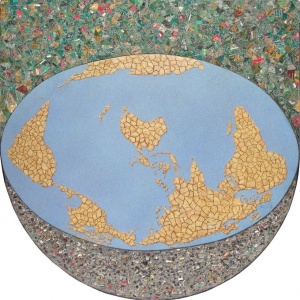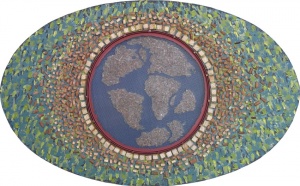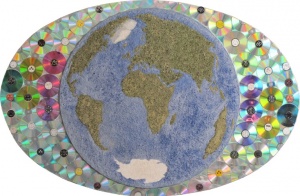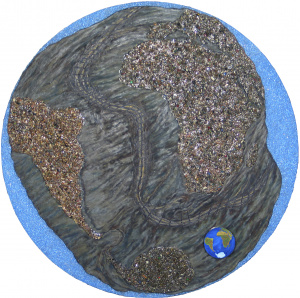The plastic artist Walter Miranda considers himself a defender of the technique in painting. Among its arguments is that, to fly higher, it is necessary to know how to spend less energy, which means that the knowledge brings better and better results in any activity.
Between last July and August, he presented the exhibition Requiem to Gaia - In Totum, at the Unesp Rectory. The activity is part of Project 15x15, a partnership between the University, through its Arts and Culture Committee linked to the rectory of University Extension, and the Professional Association of Plastic Artists of São Paulo, of which Miranda is president in the triennium 2013 / 2015
Miranda has shown maps alerting to the destruction of nature by humans. To do so, it appropriates the most diverse objects and materials, such as credit cards, used matchsticks, computer boards or sharpened pencil shavings. They are elements that bring symbolic content and, above all, aesthetic concerns.
Born in 1954, in the neighborhood of Itaquera, in São Paulo, SP, Miranda, son of divorced parents, attended, from 9 to 12 years old, a boarding school. It was there that he had his first experience with art. The teacher asked the children to draw a picture, and his was highlighted.
After that he was always called to the blackboard to draw pictures and help the teacher in class. Shortly thereafter, he began making small comic books that he sold at the fair near his house to earn some money.
He later studied illustration at the Pan American School of Art, where he was encouraged by comic book designer and illustrator Nico Rosso, who advised him to take live modeling classes at the Pinacoteca of the State of São Paulo. The weekly activity was coordinated by the artist Gregorio Gruber.
In the Pinacoteca course, in addition to learning a lot from drawing practice as well as listening to the comments of his teacher and colleagues, Walter Miranda started acting as a model himself. Not only there, but in other educational institutions. This activity has multiplied the opportunities to live with various artists, as well as to hear many comments in the classroom about art and drawing and painting technique.
At the beginning of his career, Miranda's works had a strong social aspect. The first painting he sold, for example, depicted a soldier in the foreground, a cloud of tear gas from the ground, and students running.
The idea was to show that it was not just a single military man who frightened young people, but a whole context that supported him and was out of the painting at the real world of the spectator.
At that time as a beginner artist, the lack of financial conditions to buy work material led Miranda to develop alternatives to express herself plastically. In the 1980s he developed a process in which he would break up magazines, beat the paper in a blender and, using pieces of wood as a press, create 8 mm thick bases. Then he made drawings on the bases and paintings.
The difficulties became advantages that encouraged him to build by himself his own studio. It is located in the São Paulo neighborhood of Sacomã. It has a very high ceiling height, seven meters, and large glass panes. World observation and practice in dealing with different materials have become a trademark. It was in this way that Walter Miranda came to the artistic use of computer boards.
While attending the home of his friend and sculptor Roberto Gianecchini, who worked for a French company repairing and exchanging computers, Miranda saw on the processor boards aerial views of cities. He took some to the studio and began using them in his work. Initially, he used each of them at their original size. By the time conducted research by sawing and adapting the material according to his visual objectives.
A constant feature of Walter Miranda's work is maps. With the end of the military dictatorship, he continued to be contestant, but his focus widened. His criticism went on to demonstrate the irresponsible way that technology has been used solely to generate money, while disregarding respect for nature. The São Paulo region where he was born, for example, which was previously full of green, became a jungle of asphalt and concrete.
Miranda was a teacher at the School of Arts and Crafts, from 1986 to 1995, and since 1996 teaches in his studio. His teaching activity includes drawing, watercolor, pastel, ink, human figure and painting. He also gives lectures, conferences and workshops at art in schools, cultural institutions, colleges and universities. Thanks to these activities, Miranda has been observing that there are currently many young artists with little space to exhibit. This scenario would be aggravated by universities receiving high school youth who lack basic arts training, both in practice and in theory. As a result, the four-year undergraduate degree is a too short period to provide better reference baggage, which is essential for creating a high level of knowledge that the artist can use throughout his or her career.
Miranda says she learned during dictatorship the importance of logic and intelligence. Since it was impossible to win by force, the alternative was to convince society by its arguments. Likewise, the more the young artist knows drawing, perspective and notions of light and shadow, the more he can unlearn, synthesizing and stylizing, to find his own form of expression.
Oscar D'Ambrosio - The Magazine “Unesp Ciência” - October 2014 - Pages 42 and 43.
